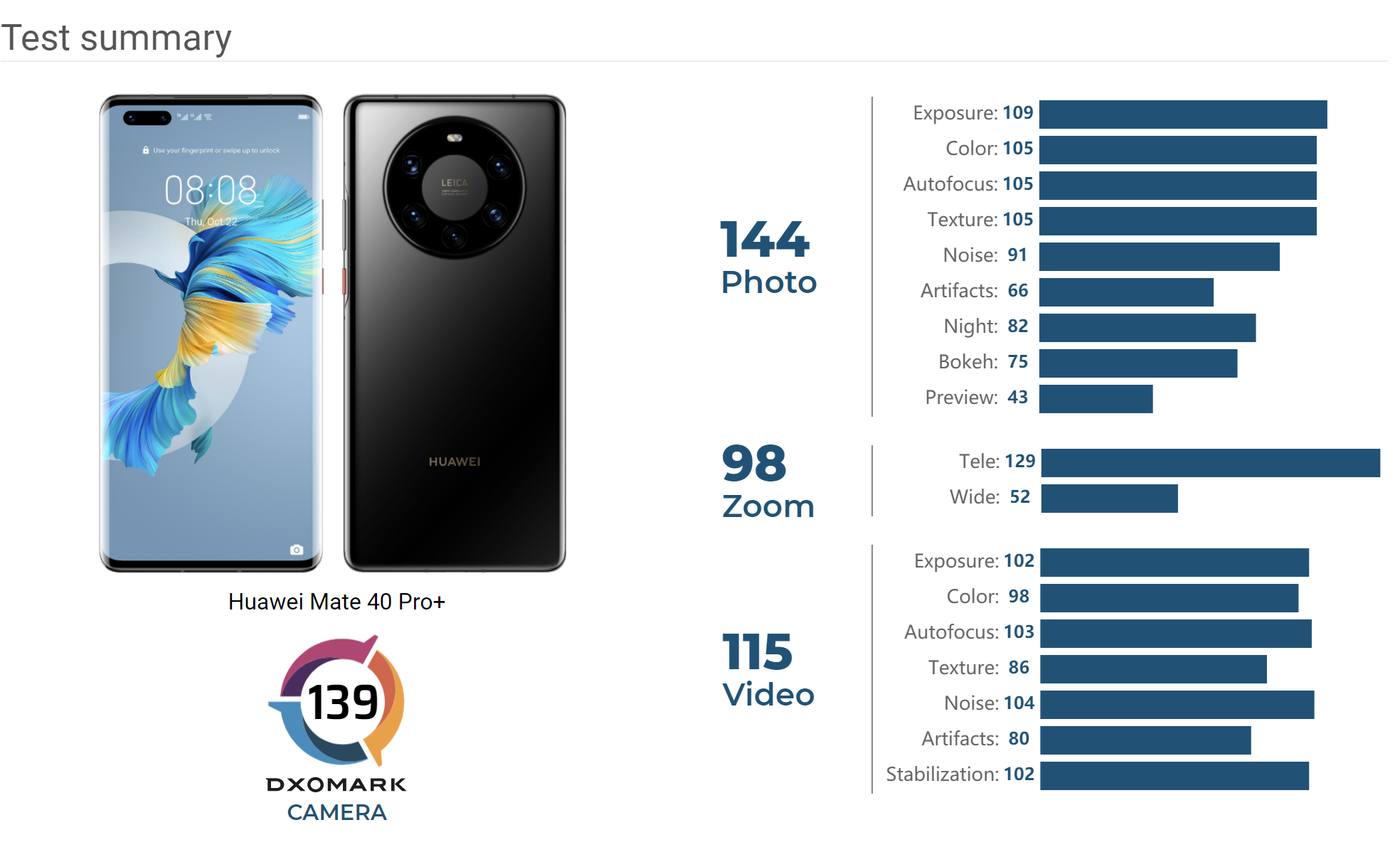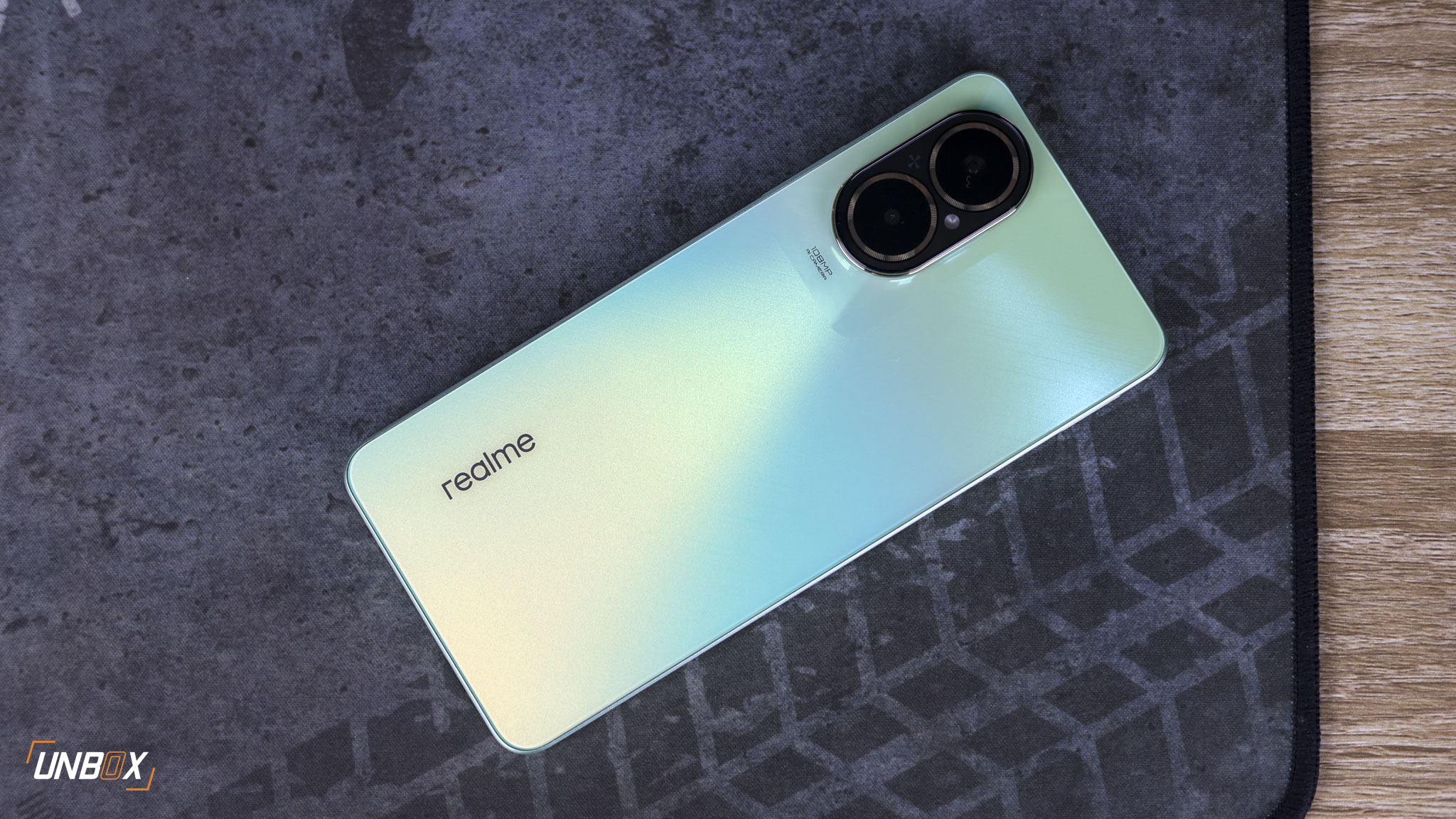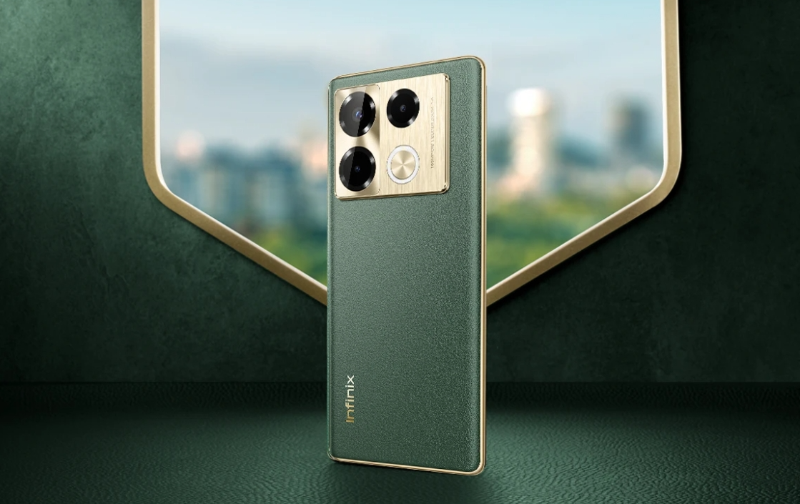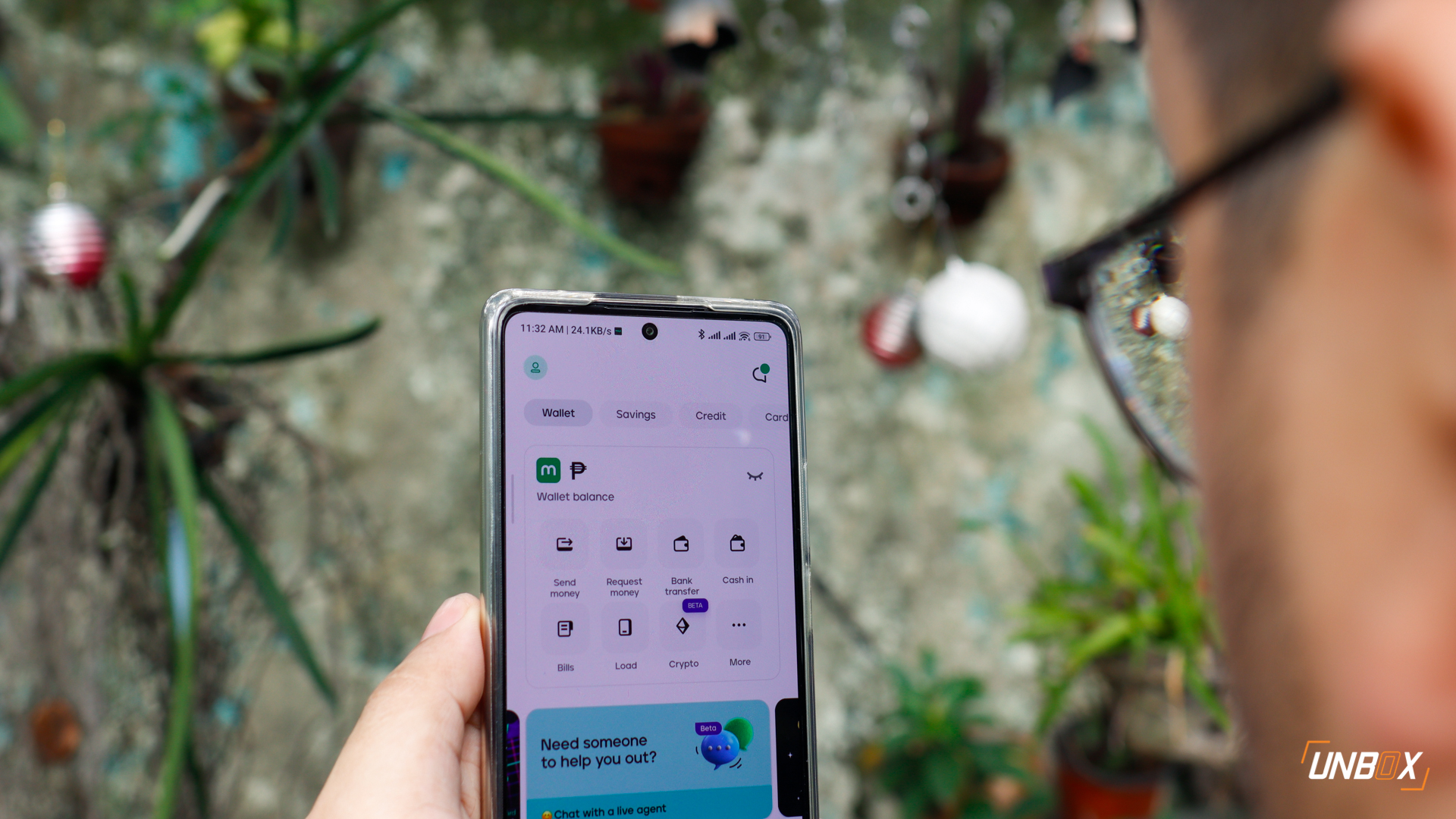As 2020 comes to a close, DxoMark officially proclaims the Mate 40 Pro+ as the top dog in its rankings with a score of 139. That makes it 3 points higher than the Mate 40 Pro, and that is due to the better camera setup on the Mate 40 Pro+: the 50-megapixel f/1.9 main camera has optical image stabilization, while the 20-megapixel ultra-wide-angle camera sacrifices aperture opening (f/2.4 vs f/1.8 on the Mate 40 Pro) while having a wider field of view thanks to Huawei’s Freeform lens tech.
The biggest difference between the Mate 40 Pro and Pro+ is with the telephoto cameras, where the Mate 40 Pro+ has two of them: one is a 12-megapixel camera with 3x optical zoom and OIS, and the other is an 8-megapixel periscope camera with 10x optical zoom and OIS.
Going to the scores, the Mate 40 Pro+ bagged the highest score for the photo category and takes second place for both zoom and video. In general, there’s little to complain about the Mate 40 Pro+’s photo capabilities save for minor exposure inconsistencies when shooting indoors and color casts when shooting in low light.
As for its telephoto cameras, the Mate 40 Pro+delivers great performance throughout the whole range, though the autofocus speed on the periscope camera is a bit slow. The Mate 40 Pro+ has one of the best ultra-wide-angle cameras out there, with its 14mm focal length equivalent as one of the widest ever in a smartphone.
As for the flagship killer segment, DxOMark lauds Xiaomi’s Mi 10T Pro with an overall score of 118. That by itself is a feat, as it positions itself just a point behind the iPhone 11 and a whopping 20 points ahead of its non-Pro sibling.
While the only main difference between the Mi 10T and Mi 10T Pro is the rear cameras-the Mi 10T settles for a 64-megapixel main camera with PDAF, the Pro model gets a 108-megapixel snapper with PDAF and OIS. As a tradeoff, the Mi 10T Pro loses the vanilla model’s 3x telephoto camera, which is replaced by a 5-megapixel macro camera instead.
While the Mi 10T Pro’s zoom capabilities are limited, the Mi 10T Pro performed significantly better than its vanilla sibling when it comes to handling texture and noise. In addition, the Mi 10T Pro’s 108-megapixel main camera boasts of a wide dynamic range, pleasant target exposure, and very good color rendering.
Despite being a flagship killer, the Mi 10T ties with the more expensive Mi 10 Pro and Mi 10 Ultra when it comes to video with its effective stabilization and handling of texture and noise.







































































